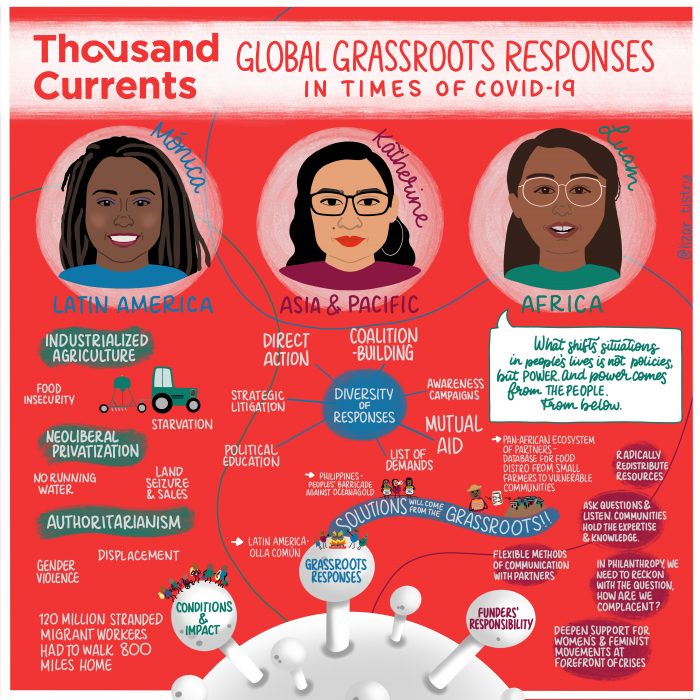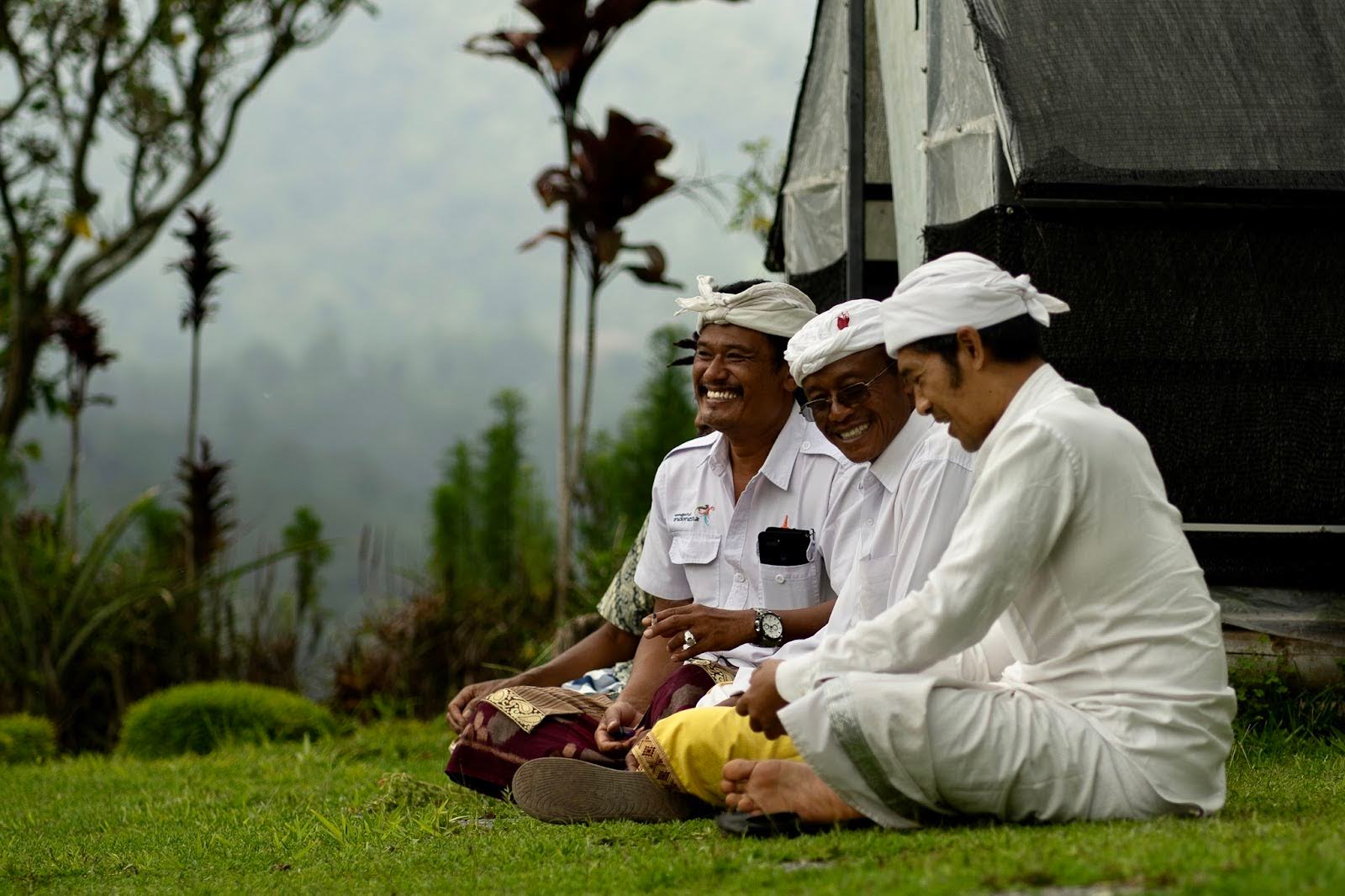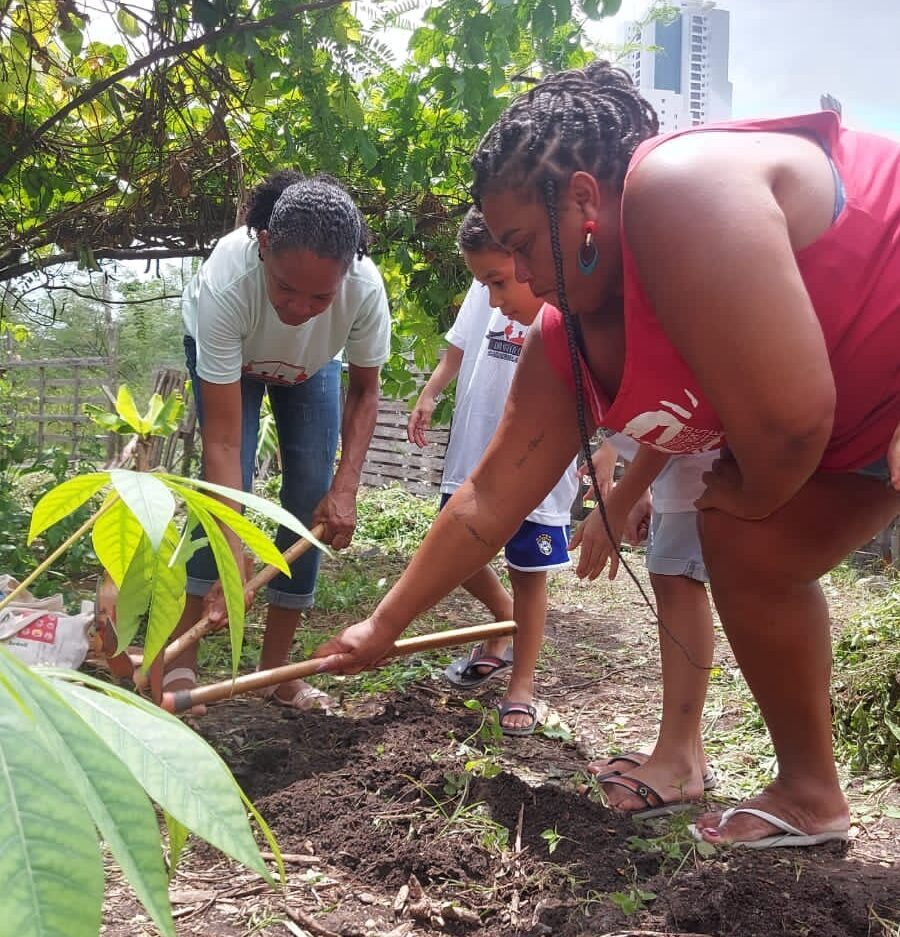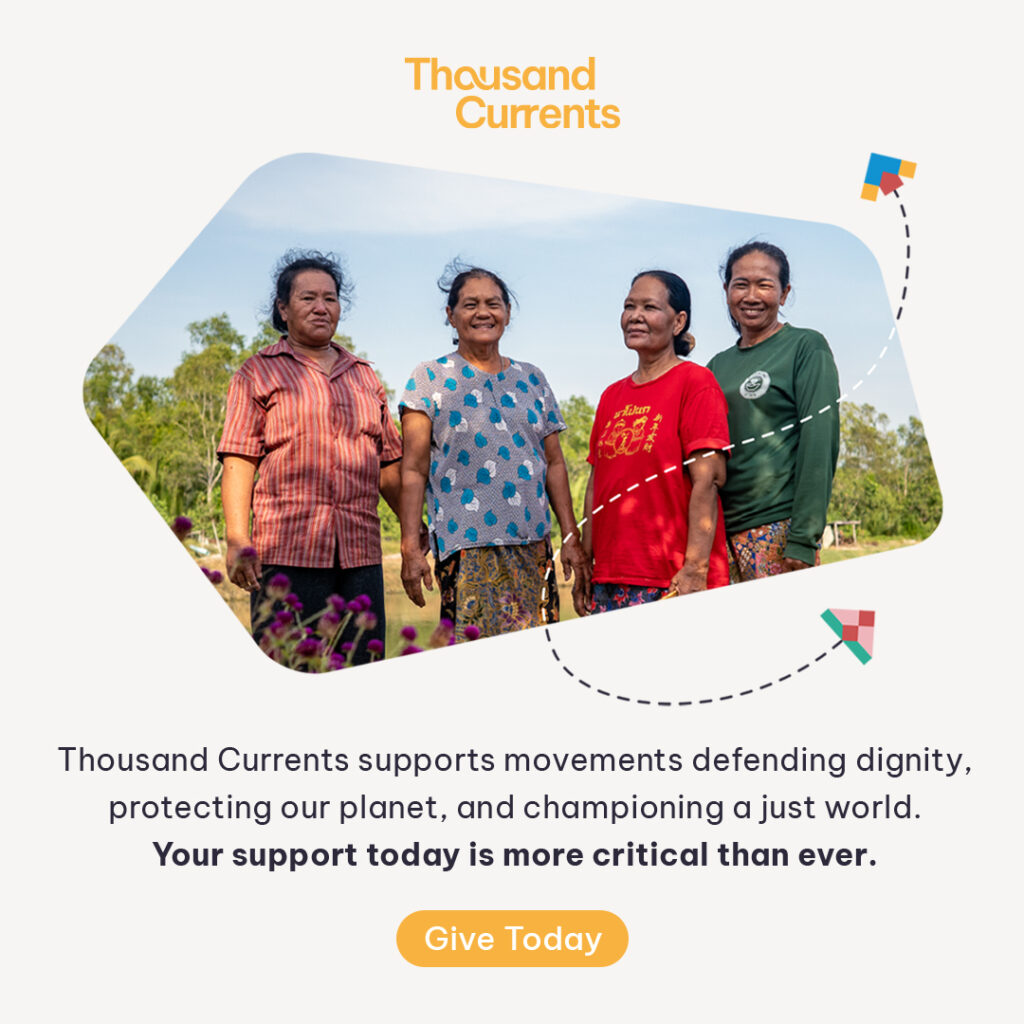What can funders consider when responding to COVID-19?

COVID-19 has upended the world as we know it. And while we are all susceptible to the virus, we know that the impact is not carried equally.
Both domestically here in the United States, and globally, we are seeing this pandemic exacerbate existing inequities –– further marginalizing those who are already vulnerable.
Particularly where Thousand Currents’ partners are based, the compounded effects from imperialism, extractivism, authoritarianism, limited healthcare infrastructures, and inequality create fertile ground for a pandemic like this. Effective responses to this pandemic require us to consider the fact that the pandemic’s causes, impact, and solution are social, economic, and political. We need to build an intersectional and interconnected response.
Those who are disproportionately impacted also hold the most effective strategies to respond to crisis. Yet, less than 1% of funding in emergencies reaches local response. Those of us who are in philanthropy and who now must confront the impact of COVID-19 on the places we fund have an opportunity to change that dismal trajectory by ensuring our resources reach frontline solutions. Here are some suggestions on how we can do that:
- Understand the context: While COVID-19 is spreading around the world in unprecedented ways, responses and its impact will vary based on context. In some places, social distancing is the most effective preventative tool. In others, like in informal settlements and densely populated areas where limited infrastructure and entrenched marginalization make social distancing difficult, communities and governments will need to develop contextually feasible and effective preventative and mitigative strategies. Consider having your emergency response be nimble, adaptive, and context specific to reflect the diversity of needs and their emergent and dynamic nature as conditions change rapidly. For some groups, the most immediate need may be accessing essential food and medicine. For others, the most immediate need may be securing technological platforms so that they can move their organization’s work to virtual platforms. For others, protecting the safety of activists may be the most pressing need. There aren’t singular needs, impacts, or strategies. Emergencies like this point to failures across various systems and as funders we are called to hold a systemic and contextual lens to ensure resources go where they are needed.
- Fund the frontline: In emergencies, funders often fund what they know and who they know. Resources disproportionately reach larger institutions over frontline communities and organizations. Given the public health impetus of this breakdown, there may also be a tendency to focus on large scale initiatives through private and public partnerships. While effective responses to COVID-19 will require all sectors –– government, social, and private — playing their parts, it is crucial for funders to fund the frontline and channel resources directly to grassroots and social movements. They are first responders and we have seen from past emergencies that they are also most effective. They are there before, during, and after, and are able to integrate crisis response with long-term resiliency. Who we fund and how we fund matters as much as what we fund.
- Release control: Provide core, flexible support to help grantee partners meet their needs as they emerge and as they see fit. They know their contexts and needs best and there is not one correct need in a moment like this where people are adapting and responding to an unknown threat in uncertain contexts. In general, core, flexible, long-term support is what our partners need to best advance their mission, and is especially important in a crisis situation. If you have transitioned your grants from restricted funding to unrestricted funding for this crisis, consider making that an ongoing practice.
- Get creative – Formal channels for moving resources may become difficult. Banks may close. Certain restrictions may limit people’s ability to access funds. Think creatively about how you can move resources to grantee partners now, before the pandemic becomes a full blown crisis in the places you work. Perhaps remittance platforms may work better than banks in getting money fast and quick to partners? Perhaps mobile cash transfers?
- Make the connections to long-term strategies: While a virus, the impact of COVID-19 reflects systemic failures and effective responses will need to integrate long-term strategies for systems transformation. This pandemic makes the case even more clear that we must support people to own the production and consumption of their food; that we need new economic systems that do not leave the majority of the world’s population one crisis away from losing everything; and that we need healthcare that is available to everyone not just those with a formal job or who can afford it. Now is the time to invest in long-term resiliency and wellbeing so that our communities are better able to lead healthy lives and manage the next big emergency. Now is the time to fund climate, to fund feminism, to fund new economy experiments. Now is the time to make connections and fund the future we need.
This is a moment for us to seize and advance what it means to be in solidarity with each other. It is an opportunity to go above and beyond, and radically shift the way we approach our work and our role as funders. It is the time to full heartedly embrace a more just and equitable future that supports that wellbeing of all.
In solidarity,
Solomé Lemma

Related Stories




